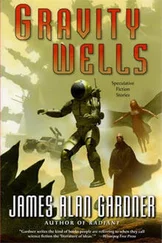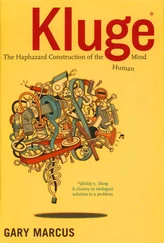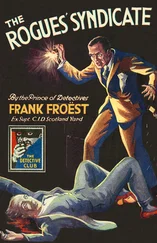Hydrogen bonds are something else.
Once again, we might take water as our example. But here we are looking at the chemical interactions between whole water molecules – the H 2Os reacting with one another. There are forces of attraction, albeit rather weaker and less stable than covalent bonds, between certain molecules that contain both hydrogen and heavier atoms such as nitrogen, oxygen or fluorine. Since water contains hydrogen and oxygen, these hydrogen bonds can form between molecules of water – it is this sticking together of water molecules that explains the difference between water vapour, or steam, liquid water and solid water, or ice. In ice most of the molecules are attached to one another by hydrogen bonds, to form something like a crystal; in liquid water varying amounts are attached to one another; and in steam, as a result of the addition of energy through heating, the hydrogen bonds linking water molecule to water molecule are broken down but the covalent bonds linking atoms to atoms remain intact.
We see that hydrogen bonds are weak, and thus unstable when heated, but covalent bonds are stable. These same two bonds, covalent and hydrogen bonds, are important ingredients in the structure of organic chemicals such as proteins. And they are also important in the structure of DNA.
Between 1927 and 1932, Pauling published some fifty scientific papers in which he conducted X-ray diffraction studies, coupled with quantum mechanical theoretical calculations, leading him to postulate five rules, known as Pauling’s rules, that would help science to predict the nature of the bonds that held together atoms within molecules. At least three of these rules were based on Bragg’s own work, the purloining of which provoked Bragg to fury. It was now inevitable that there would be ongoing scientific rivalry between the two scientists. Pauling’s work into the nature of chemical bonding was so original, and pioneering, that he was awarded the Nobel Prize in Chemistry in 1954. Meanwhile, this new level of understanding enabled Pauling to visualise the precise shape and dimensions of molecules in three-dimensional space. Working at Caltech, Pauling applied this to the huge molecules of proteins, using the techniques of X-ray diffraction analysis pioneered by the Braggs. He showed, for example, that the haemoglobin molecule – the focus of Perutz’s research – changed its physical structure when it gained or lost an oxygen atom. And Pauling continued to apply his rules to researching the molecular structure of proteins.
Pioneering X-ray pictures of fibrous proteins had been obtained some years before at the University of Leeds by William Thomas Astbury, the physicist who had attended Wilkins’ talk in Naples, but it was assumptions based on these X-ray diffraction pictures that Crick was now questioning at the Cavendish Laboratory. For many years Pauling had tried to apply quantum mechanics calculations to Astbury’s X-ray pictures, but he found that things just didn’t add up. It would take him and two collaborators, Robert Corey and Herman Branson, fourteen years before they made the necessary breakthrough.
All proteins have a primary structure that is made up of an amino acid code, with the letters made up of twenty different amino acids. The chemical bonds that join up the amino acids into the primary chain are called ‘peptide bonds’. Pauling and his collaborators now realised that peptides bonded together in a flat two-dimensional plane – they called this ‘a planar bond’. A problem with outdated equipment had caused Astbury to make a critical error in taking his X-ray pictures: the protein molecules became tilted away from their natural planes, skewing the mathematical extrapolations of their structure. Once they had corrected Astbury’s error, Pauling and co discovered that as the chain of amino acids grew, to form the primary structure of proteins, it naturally followed the shape of a coiled spring, twisting to the right – the so-called ‘alpha helix’. This was the discovery that had excited Watson on his return trip from Naples.
Back in Cambridge, Sir Lawrence Bragg was bitterly disappointed when Pauling’s group beat his to the discovery of the primary structure of proteins. But there was a silver lining to the cloud: Perutz now used Pauling’s breakthrough to reappraise his own work on the haemoglobin molecule, a reappraisal that would solve the structural puzzle of haemoglobin and garner his Nobel Prize in Chemistry in 1963. Pauling’s discovery also alarmed Watson who, from his arrival at Cambridge, had assumed that they had a very knowledgeable and powerful rival in what was now a race to discover the three-dimensional structure of DNA.
*
But the problem, as Crick would point out in their day-to-day sharing of thoughts and incessant debate, was that they couldn’t even assume that Pauling’s data was right. In Crick’s words, ‘Data can be wrong. Data can be misleading.’ So Crick and Watson attempted to construct their physical model with a sceptical eye on prevailing experimental data. To put it another way, they relied just as heavily on creative leaps of their own imagination as on existing experimental data.
Crick and Watson were now asking themselves if DNA, like proteins, had a helical structure, and Watson in particular was convinced that they should also take their cue from Pauling, who liked to construct three-dimensional models of the molecules he was attempting to envisage. To do so they would have to think, as Pauling did, about the atomic structures that made up the chemistry of DNA – to fit the molecules, with their component atoms, and the bonds between them, into a complex three-dimensional jigsaw. They knew that they were dealing with the four nucleotides – guanine, adenine, cytosine and thymine – together with the molecule of the sugar, called ribose, and the inorganic chemical, phosphate, all of which, when correctly fitted together, must somehow make up the mysterious three-dimensional jigsaw puzzle.
Two relevant questions now loomed. Firstly, if the structure was helical, what kind of helix was involved? And secondly, where did the phosphate molecule fit into the structure? Calcium phosphate is the mineral of bones, of shells, of rocks formed from the remains of living marine organisms – limestone. The presence of phosphate suggested some kind of strengthening of the DNA chain – a chemical scaffold – maybe a spine? But where did this spine lie in relation to the presumptive and as yet unknown spiral? And where, or how, did the sugar fit in? The code itself must surely lie with the nucleotides, acting perhaps as something like letters. Each was a key ingredient, but how on earth did the whole thing assemble in a way that made sense?
An important clue must come from the X-ray diffraction patterns. That meant they needed the help of Maurice Wilkins and Rosalind Franklin – ‘Rosy’, as Watson referred to her in his autobiography – who were conducting X-ray analyses of DNA fibres at the King’s College London laboratory.
*
Rosalind Elsie Franklin was born in London to a prosperous Jewish family in 1920. From an early age she showed both a brilliantly incisive mind and the stubbornness necessary to make a distinguished mark for herself. She also showed an aggressively combative side to her personality that might prove a mixed blessing in overcoming the prevailing prejudices against Jews in society, as well as against women being in higher education and the scientific workplace. It didn’t help that her father, who appeared to be a similarly combative character to his daughter, opposed her notion of a career in science. In her second year at Newnham College, Cambridge, he threatened to cut off her fees, urging that she switch to some practical application in support of the war effort. Only when he was dissuaded by her mother and aunt did he relent and allow her to continue her course.
Читать дальше












